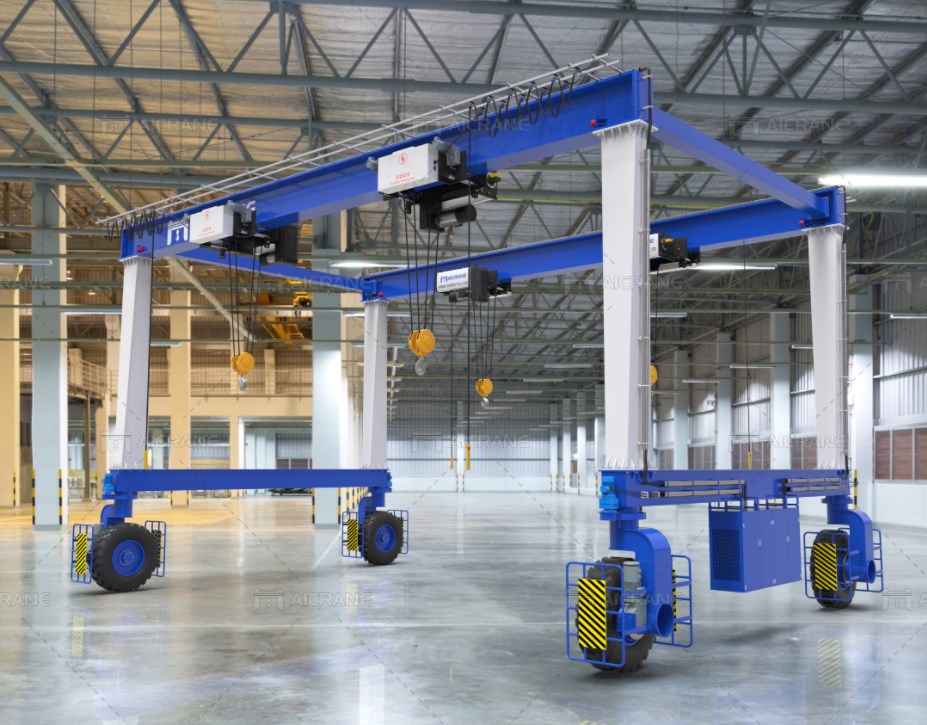Exploring Different Varieties of Rubber-Tyred Gantry Cranes
Rubber-tired gantry cranes (RTGs) are versatile and indispensable equipment in modern container handling facilities, helping streamline cargo operations at ports and intermodal terminals. These mobile gantry cranes utilize rubber tires for movement, providing flexibility and efficiency in container stacking, retrieval, and transportation. In this article, we will delve into the various types of rubber-tired gantry cranes, each tailored to specific operational requirements and environments.
1. Standard Rubber-Tired Gantry Cranes
Standard rubber-tired gantry cranes serve as the baseline model for container handling operations. They are typically equipped with a single trolley and spreader, making them suitable for efficiently moving and stacking containers in a wide range of applications. Standard rubber tyred gantry cranes are known for their adaptability and are often used in general container yards.
2. High-Stack Rubber-Tired Gantry Cranes
High-stack rubber-tired gantry cranes are designed with an increased lifting height capacity. These specialized cranes are ideal for stacking containers in high-density storage areas or where vertical space is limited. High-stack rubber-tired gantry cranes allow terminals to maximize their storage capacity without the need for extensive yard expansion.
3. Straddle Carrier Rubber-Tired Gantry Cranes
Straddle carrier rubber-tired gantry cranes are characterized by their unique design, featuring a pair of large, wheeled legs that straddle the container. These cranes are well-suited for handling oversized or irregularly shaped cargo, such as heavy machinery or project cargo, in addition to standard containers. Straddle carrier rubber-tired gantry cranes provide excellent stability and load distribution, making them a preferred choice for certain specialized cargo handling operations.
4. Eco-Friendly Rubber-Tired Gantry Cranes
As sustainability becomes a paramount concern in the maritime industry, eco-friendly rubber-tired gantry cranes are gaining popularity. These cranes are equipped with advanced technologies like hybrid or electric power systems, reducing emissions and minimizing the environmental impact. Eco-friendly rubber-tired gantry cranes not only enhance operational efficiency but also align with the industry's commitment to eco-conscious practices.
5. Automated Rubber-Tired Gantry Cranes
Automation is revolutionizing container handling, and automated rubber-tired gantry cranes are at the forefront of this transformation. These cranes are equipped with advanced control systems and sensors that enable autonomous container handling operations. Automated rubber-tired gantry cranes enhance efficiency, reduce labor costs, and improve safety by minimizing human involvement in high-risk tasks.
Conclusion
Rubber-tired gantry cranes come in various specialized types, each designed to meet specific container handling requirements and operational environments. Whether it's standard rubber-tired gantry cranes for general container yards, high-stack models for maximizing storage capacity, or eco-friendly and automated versions for sustainable and efficient operations, these cranes play a pivotal role in shaping the future of cargo handling at ports and terminals. By choosing the right type of rubber-tired gantry crane, port operators can optimize their container handling processes and meet the evolving demands of the global logistics industry.



Comments
Post a Comment